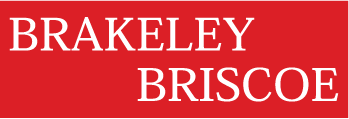Campaigning in Hard Times:
King’s College Campaign Weathers Recessions
Melanie Brandston
The Legacy of Excellence Campaign for King’s College proved that taking the time to plan a transformational campaign is worth the discipline, focus and patience. This is even truer when the economic environment would suggest that it is better to wait rather than proceed.
King’s College is a liberal arts Catholic college located on a small urban campus in Wilkes-Barre, Pennsylvania. More than 95% of students receive institutional financial aid and 40% are first-generation college attendees, mostly from modest socio-economic circumstances. This student demographic has not changed much since King’s was founded in 1946.
In mid-2002, King’s retained Brakeley Briscoe to conduct a campaign planning study. A previous campaign for $22 million was successfully completed in 2000, but many facilities and endowment needs remained unfunded. There was a new president, Rev. Thomas J. O’Hara, C.S.C., Ph.D. ’71, the first alumnus to head the College. Fr. O’Hara knew that critical to the College’s future was investing in the College’s facilities, grounds and endowment resources.
In addition, King’s was aware that the College needed to take an active part in an essential rebuilding of downtown Wilkes- Barre. A feature article in Chronicle of Higher Education describes the situation best. (May 16, 2008, “Struggling Communities Turn to Colleges” by Karin Fischer.)
Brakeley Briscoe conducted its campaign planning study in early 2003, just after the start of the Iraq War and while there was considerable economic uncertainty. Some—but not all—interviewees admitted that the timing of their gifts could depend somewhat on the economy. Still, they were ready to support the College with gifts never considered before as long as more alumni were approached to support their alma mater.
Use down time to cultivate, plan
With a Brakeley Briscoe recommended “working goal” of $25 million, “silent phase”campaigning started in summer 2003. King’s took advantage of the slow economic times to do much needed, behind-the-scenes, planning and preparation. King’s reorganized staff to support a donor-centered campaign. They enlisted leadership and finalized the key needs that would comprise the Legacy of Excellence Campaign. Alumni prospect identification was a top priority since past campaigns had focused on friends and alumni within a 50-mile radius of campus. A Trustee-based campaign leadership group headed by John O’Brien ‘64 assisted Fr. O’Hara from the start and was of great value throughout the 5-year campaign period. The board of trustees stepped up early and throughout the campaign. They committed a record-breaking $15.2 million with 100 percent participation. This became a catalyst for increased and new gifts from others near and far away from northeast Pennsylvania.
Longer campaign time lines
The campaign required five years, since campaign planning started during an economic downturn, a strategy that is common in campaigns run during difficult times. The fact that King’s did not sit back and wait until the economy improved placed the College far ahead of other college and nonprofit campaigns in the region. King’s attracted unprecedented gifts from current and new donors. The fact that they took the time to prepare was a reason for an $8 million unrestricted commitment from an anonymous donor. And for the first time non-trustee alumni gave 16% of the dollars raised. Annual giving surpassed its goal by 38%. Indeed, King’s alumni realized that it was time to give back to their school.
The community showed its support of King’s as well with investments in new initiatives such as a Shoval Center for Community Engagement and Learning named after a local area businessman and his family, a Wilkes-Barre native and loyal trustee of King’s.
King’s celebrated its Legacy of Excellence campaign’s success in May 2008. $38 million was raised, 73% more than the previous campaign and 52% over the “working” goal set in 2003. The King’s community is celebrating their transformational success just as another economic recession is upon us.
Lessons learned
Lessons learned: Many organizations need time to effectively prepare for mega-gifts and donor-centered campaigns. A recessionary period can be an excellent time to build necessary infrastructure and undertake cultivation activities. The focus should be twofold. First: prepare for solicitations that are primed for great results regardless of the economy or as soon as the economy improves. Second: identify prospects with six-figure-plus giving capacity where giving inclination requires concerted donor-centered relationship-building activities. Focus on the cultivation with the realization that relationship-building takes time, focus and investment. New gifts will be achieved in the relatively near future; transformational gifts from new donors are more likely in the next campaign (and there always is another campaign on the horizon).
As 2008 comes to a close many believe we are in worst recession since the 1980s. While nonprofits should review their fundraising goals and plans, we remain firm in our recommendation that a recessionary time is an excellent occasion to plan, prepare and get ready for when times get better.
